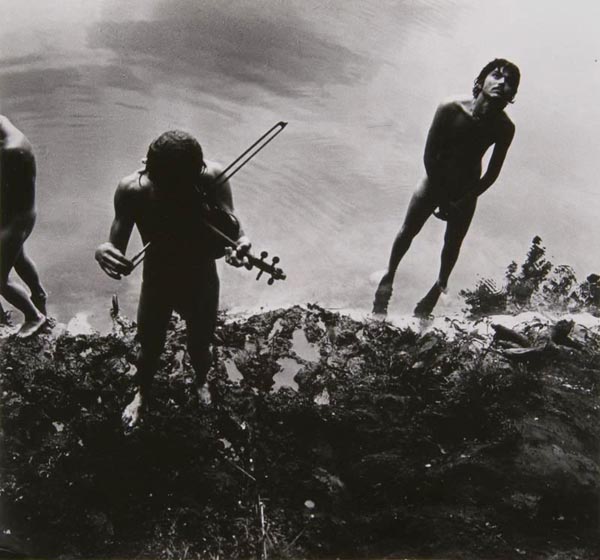Eugeny Pavlov

© Eugeny Pavlov
About The Artist:
Eugeny Pavlov (b. 1949) started his engagement in photography in late 1960's. He was one of the founders of the Vremya group in 1971.
His b/w The Violin series (1972) depicting a happening of young nude male hippies was published in Fotografia magazine in Poland in 1973, which – both the work and the fact of publication – was considered an ideological diversion by the KGB.
Pavlov's other work of 1970 - 1985 include color images made in 'overlays' technique, direct color photography shot on slide film ('Love', 'Orwochrom'), as well as b/w work: an expessionist 'Psychosis', a 'Black&White' archive series of realistic images depicting life in the Soviet Union, and a number of montages.
Overlays (Superimpositions)
Overlays (also called superimpositions or a 'sandwhich' technique) – two overimposed color slide film frames, that were then either projected on a screen as a slide show or printed on photopaper. The technique was invented by Vremya Group artists and at least 3 of them (Mikhailov, Malevany and Pavlov) frequently used it. Pavlov's overlays often consist of two unequal primary images: the main figurative one and the accessory one with textures, object surfaces or other almost abstract pictures. The resulting two-layered combination of realistic and abstract elements produces a complicated and obscure painting-like image. It could be said that Pavlov's overlays are less haphazard; the resulting effects of the combinations are 'pre-meditated'.
Montages
While Malevany's and Suprun's montages attempted to simulate real-life pictures creating what can be called a 'could-be' reality, Pavlov's artful works in this technique do not try to look real. Rather, they appeal to imagination and exist in a virtual, psychological space of phantasmagorical 'would-be' reality. This approach freed an artist's hands to combine meanings without any restraint of semblance with a documentary image.
Eugeny Pavlov Portfolios 1970-1980s
We welcome your comments. VASA Exhibitions are the result of various curators, artist, and photographers.